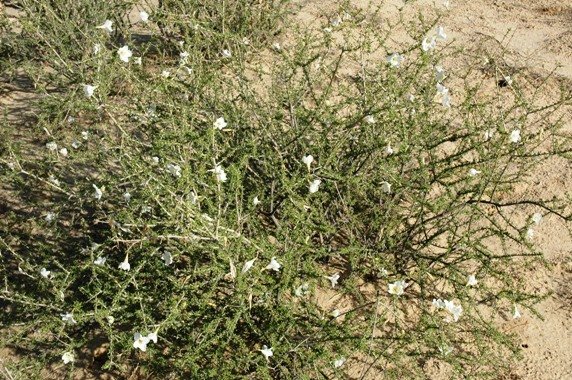Rhigozum trichotomum

Author: Ivan Lätti
Photographer: Johan Wentzel
Rhigozum trichotomum becomes a spreading spiny shrub. The tiny leaves grow in whorls of three, grey-green and hairy. Their margins are entire and wavy. The leaf is folded inwards along the central axis and often recurves towards its tip. The small leaf size and its grey hairy cover contribute to survival when the rain stays out during the long hot summers. The leaves are unpalatable and rarely browsed, although the pods and flowers may be taken by livestock and game.
The plant is considered an invader that may form impenetrable thickets. Over-representation of a species in an environment becomes detrimental to the survival of other species. Competing species are also survival partners. The impoverishment resulting from obliteration of neighbouring species eventually also reduces the survival capacity of the dominant one.
Examples include R. trichotomum in the north-west of South Africa… and the people on earth who have become too many for the environment and other species compatriots to cope.
Such situations may or may not be constructively reversible by human intervention. The will to do so may grow slowly in human minds as the effects of overpopulation hit home. Balance in living systems is always temporary in nature, development favouring growing trends for a time, to change when resources run out and the scales tip. The timeframe of reversal or rather, the transformation to the next phase of what a piece of land will carry, is often hard to predict (Coates Palgrave, 2002; Shearing, 1994; www.karoohoogland.co.za).

